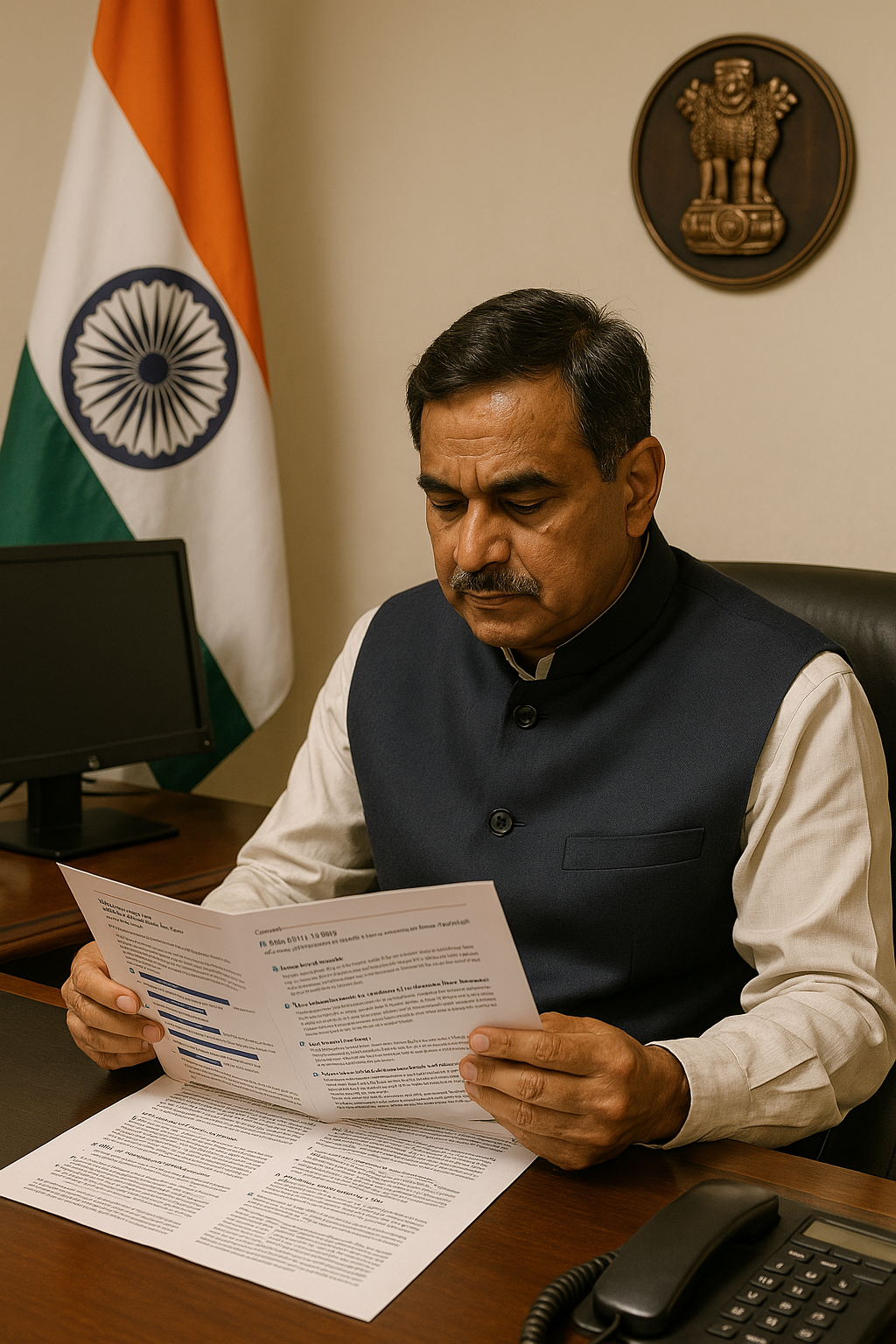India Advances Governance Reform: DARPG’s Feb 2025 Report Highlights Progress
DARPG’s February report celebrates a number of innovative, citizen-first practices introduced across departments that reflect a responsive and inclusive governance model.

- Country:
- India
The Department of Administrative Reforms and Public Grievances (DARPG), functioning under the Ministry of Personnel, Public Grievances and Pensions, has released the 19th edition of its monthly ‘Secretariat Reforms’ report for February 2025. The report presents a detailed analysis of the central government's continued strides in transforming administrative frameworks, enhancing public service delivery, and adopting cutting-edge digital tools to usher in a new era of governance.
The February 2025 edition underscores robust progress across three pivotal pillars:
-
Swachhata and Reduction in Pendency,
-
Efficiency in Decision Making, and
-
e-Office Implementation and Analytics.
The report also places special emphasis on "Best Citizen-Centric Practices", a focused overview of the Ministry of External Affairs (MEA), and Cabinet Secretariat directions for strengthening e-Office adoption across ministries.
1. Swachhata Campaign & Pendency Reduction: Tangible Results Across India
Continuing the momentum of the Special Campaign 3.0 and ongoing administrative reform drives, the Government has reported wide-ranging achievements:
-
Cleanliness Drives: An impressive 5,825 sites across the country were covered under cleanliness campaigns, demonstrating the depth and reach of the initiative.
-
Space Optimisation: The efforts led to the liberation of approximately 3.47 lakh sq. ft. of office space, with standout contributions from:
-
Ministry of Coal: 1,41,721 sq. ft.
-
Ministry of Railways: 51,928 sq. ft.
-
-
Revenue from Scrap Disposal: Scrap management was handled efficiently, generating Rs 156.41 crore, with significant proceeds attributed to:
-
Ministry of Railways
-
Ministry of Heavy Industries
-
Ministry of Coal
-
-
Efficient Record Management: A total of 1,74,565 physical files were reviewed, leading to 1,05,818 files being weeded out. In the digital domain, 67,457 e-Files were assessed, with 38,451 files closed.
-
Public Grievances Redressal:
-
4,80,422 grievances disposed of, indicating a 91.21% disposal rate.
-
Also addressed were 762 Member of Parliament references and 291 references from state governments, showcasing a strong inter-governmental coordination mechanism.
-
2. Citizen-Centric Innovations: Ministries Walk the Talk
DARPG’s February report celebrates a number of innovative, citizen-first practices introduced across departments that reflect a responsive and inclusive governance model.
Noteworthy best practices include:
-
Ministry of Electronics and Information Technology: Set up a dedicated RTI & Public Grievances Office at Electronics Niketan, enhancing transparency and facilitating better citizen engagement.
-
Department of Defence: Improved residential infrastructure at BEL Brij Vihar Colony, Ghaziabad, benefiting personnel and their families.
-
Department of Public Enterprises, Ministry of Finance: Focused on citizen convenience with upgraded public-facing facilities.
-
Central Board of Direct Taxes (CBDT): Undertook a rooftop revamp at Aayakar Bhawan, Kolkata, introducing secure storage solutions, aligning with modern infrastructure standards.
3. Driving Digital Governance: e-Office, Analytics & Reduced Bureaucratic Layers
The Government's push toward a digitally empowered administrative ecosystem is showing measurable results:
-
Delayering of Decision Processes: The average number of distinct transaction levels for active files has been brought down from 7.19 in 2021 to 4.24 by February 2025, reflecting faster decision-making.
-
e-Office Implementation Milestones:
-
92.70% of files created in February 2025 were e-Files, a slight uptick from 92.56% in January 2025.
-
94.55% of all receipts processed were e-Receipts.
-
37 Ministries/Departments achieved 100% e-Filing adoption, showcasing model performance.
-
19 Ministries/Departments processed 100% of receipts digitally in February 2025.
-
-
Reduced Inter-Ministerial File Movements: File transfers between ministries dropped to 2,959 in February 2025 from 3,238 in January 2025, streamlining coordination and cutting red tape.
4. Spotlight: Ministry of External Affairs (MEA) Leads by Example
This month’s “In Focus” section celebrates the Ministry of External Affairs for its exemplary work in adopting e-Governance tools and enhancing citizen services both in India and through its missions abroad. The MEA has been actively implementing e-Office, improving grievance redressal systems, and incorporating feedback mechanisms from citizens for better service delivery.
5. Strategic Directions from Cabinet Secretariat: e-Office Push
The report also highlights strategic guidance from the Cabinet Secretariat, urging all ministries and departments to:
-
Accelerate full e-Office implementation,
-
Integrate performance analytics to monitor progress,
-
Adopt best practices from high-performing departments, and
-
Encourage capacity building and training in digital tools for government staff.
Conclusion: A Roadmap for Administrative Excellence
The Secretariat Reforms Report for February 2025 paints a promising picture of the government’s sustained commitment to a cleaner, faster, and more citizen-focused bureaucracy. From digitizing workflows and boosting decision-making efficiency to addressing grievances and eliminating administrative clutter, the reforms are creating a strong foundation for transparent, agile, and digitally driven governance.
The achievements this month are a testament to the vision of Minimum Government, Maximum Governance, reinforcing trust and responsiveness at all levels of the administration.
- READ MORE ON:
- Secretariat Reforms










